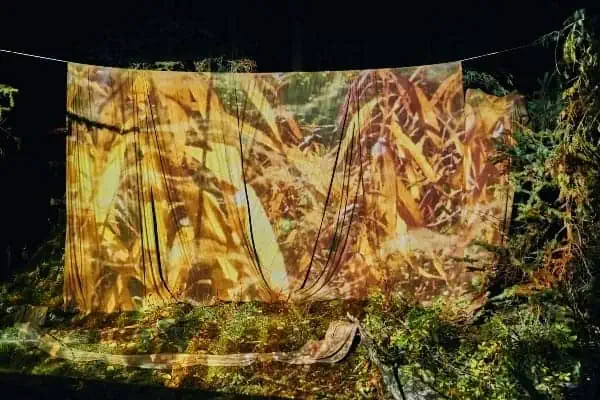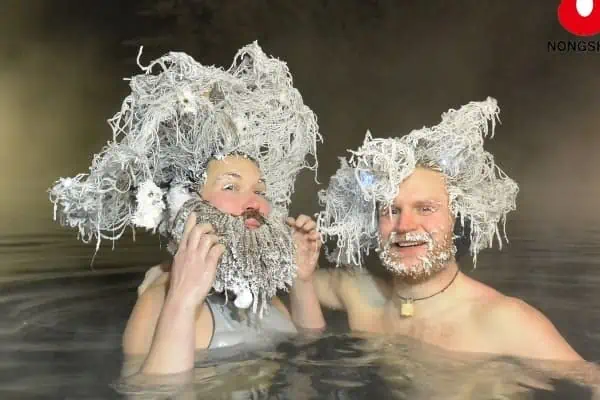I have been a rock climber for seven years; I went from being an indoor climbing warrior to outdoors enthusiast. I climb 1500 feet walls; I bushwhack for hours for a single climb and travel to exotic countries to taste the different rock.
All the while, I keep a cool head. I don’t consider my lifestyle scary or dangerous.
This year I tried ice climbing; I am officially scared.
Here is a list of things that absolutely terrify me about ice climbing:
– Losing toes or fingers to freezing cold temperatures.
– Avalanches (some climbers even forego beacons and avalanche equipment because they figure, “If an avalanche catches you while you’re way up the face of a steep ice climb, you’re a gone-er”.)
– The ice climbing motto, which is “the leader does not fall”. For perspective, in rock climbing, it is not only common, but expected, that a leader will fall. That often means you’re climbing at your grade, pushing your limits.
– Falling or belaying with sharp stainless steel spikes sticking out of your feet and hands and all over your body. I have recurring nightmares of puncturing a major artery and dying, prostate, in my climbing buddy’s arms.
– Being hit by falling blocks of ice, with nowhere to run or hide, as you are literally tied into a hunk of ice hundreds of feet from the ground.
Despite these fears I persist, because the few times I have made it out this year, I have come back with “I just climbed a motherlovin’ waterfall”, resounding in my head, as I do a little happy dance, alone in my room.
My first proper ice climb was in November. My friend and I attempted to a 300-metre climb; it had four stages, stacked on top of each other, with the last climb not involving ice — a climber should use his gear (axes in both hands, crampons on both boots) on bare rock (again, terrifying) to reach the summit.
On the morning of the climb we set off down the Alaska Highway. After an hour of driving, we put on our heavy mountaineering boots, made small talk about how cold it was, and with packs on, headed into the woods.
The hike itself took nearly two hours, and at one point involved travelling through a snow gulley, otherwise known as What-the-heck-are-we-getting-ourselves-into terrain.
After the effort of sweating and steep hiking and stopping to shed layer after layer, we beheld our climb; she was magnificent.
Ice climbers know a lot about ice. Different kinds have names that describe how good or how bad it is. They use words like “chandelier”, “cauliflower”, “mushrooms”, “candle sticks”, and “curtains” to describe ice, all the while making me hungry for a fancy dinner.
The colour of ice ranges between crystal clear (scary), white, yellow, or blue. Blue, I have been told countless times, is the best colour — it mean the ice is well consolidated, and will take good protection and axe hits.
We faced the bluest of blue ice at the base of our climb. It went up and up and up, as high as our craned necks would allow us to see.
The first section was easier than the next, so I volunteered to go first. This would be my first time on what climbers call the ‘sharp end’ of the rope, which means being in the lead position. I would climb up and, every now and then, pause and screw 10-20 centimetre ice screws into the frozen waterfall. The screws connect the rope to carabineers, which will arrest my fall. Trusting a 10-centimetre screw lodged in ice is another item to add to the above list.
The ice was good; I didn’t have to kick or swing many times before getting a solid boot or ice axe placement, and up I went. Continuously pushing aside any fears I had about falling to my icy grave, I persevered.
After about 50 metres I came to a difficult section of the route. I stopped there to set up an anchor — I placed several screws close together, and attach webbing and more carabineers in order to belay my partner up the route I had just climbed. I took a moment to appreciate the beautiful view afforded by the new height. I was proud to be leading my first ice-climb.
When my partner reached me, he congratulated me, and looked up — he was leading next. The ice wall was wide, so he had several climbing routes. He chose a section that seemed safe and within his comfort zone. Not wanting to be a Debbie Downer, I was happy he had chosen the more conservative route.
What followed was a nerve wracking 20 minutes. His crampons slipped from their purchase several times, leaving him dangling from his ice axes, which were secured by an inch in the frozen water.
When he got to the top I let out a huge sigh of relief, and followed after him. The route was scary, and I was impressed with him. As night was quickly approaching, with a 4:30 sunset, we decided to end our climb there, leaving the two sections above us for next time.




